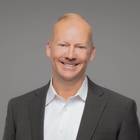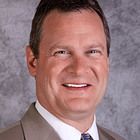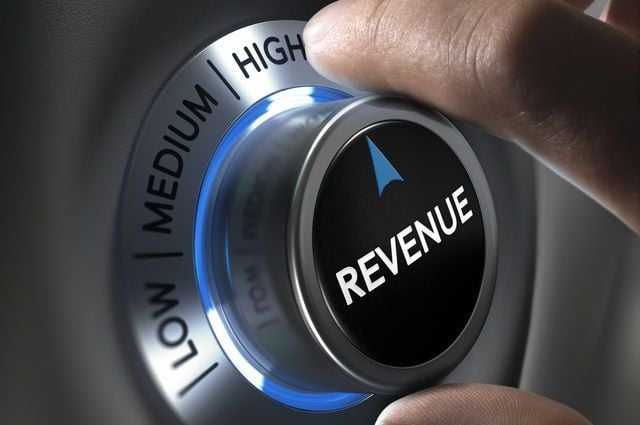How is the shift from revenue growth to total profit optimization redefining the role of today’s revenue leader?
18 experts shared their view
Rising labor, energy, and distribution costs have changed the scoreboard. A strong RevPAR no longer guarantees a healthy bottom line. Hotels can fill rooms yet still fall short if acquisition costs or channel mix erode margin. Volume without profit is just activity.
The conversation is moving from "how full are we?" to "how smart is that revenue?". Total Profit Optimization, TRevPAR, GOPPAR, and contribution by department is becoming the real benchmark. Leading hotels are integrating finance, operations, marketing, and revenue into one performance ecosystem, where every outlet and every guest touchpoint contributes to total value.
Today's revenue leader must be as fluent in cost, efficiency, and flow-through as in pricing. The best are shifting from revenue optimizers to profit strategists, aligning decisions across departments to protect and grow the bottom line.
The question is not how to drive more revenue but rather how do we transform revenue management into profit leadership?
Brilliantly articulated. This is exactly where the conversation needs to be moving forward. The era of chasing topline numbers is over, today's commercial leaders are being judged by flow-through intelligence, not occupancy percentages. I've seen firsthand how hotels with cross-functional alignment where sales, revenue, and operations share one P&L mindset outperform even with lower volumes. Profit leadership demands a new kind of commercial literacy: understanding that every pricing decision, channel, and upsell strategy must contribute to sustainable margin growth, not just room nights sold.
We've been having these conversations for about 20 years now. A lot has been said and published on this topic, including my own articles, podcast episodes, webinars, and even dedicated chapters in my last two books.
The answer, at least to me, is obvious: until RMS providers build true profit optimization capabilities into their products (which requires proper data flow for the missing pieces of the equation), we're not going to move forward. We'll just keep talking about it for another 20 years.
The missing components are:
- Operating expenses
- Distribution expenses
- Ancillaries
Most modern RMS systems still can't incorporate these elements in their algorithms, which means they're optimizing for revenue, not profit.
The ambitious vision for Total Profit Optimization is not a destination we are equipped to reach today. It's not a pipedream, but a strategic challenge demanding a phased, constructive approach.
The core issue is a structural disconnect stemming from the historical focus on Rooms:
- The Talent Evolution: We currently possess excellent Rooms Optimizers, whose skill sets were sharpened by focused toolsets and market dynamics. The path forward requires evolving this talent into holistic Profit Strategists, embracing the complexity of ancillary products.
- The Technology Augmentation: The supporting tools simply do not yet provide the capability for all product lines beyond Rooms. The strategic imperative is to introduce integrated toolsets that connect total customer value and operational cost across the entire business ecosystem, treating technology as a competitive advantage.
- The Organizational Opportunity: While many avoid optimizing back-of-house efficiency, this is where significant, tangible value is left on the table. We must prioritize embracing the available operational platforms, rather than settling for shiny, single-function solutions.
The winning strategy is to amplify humanity with carefully chosen technology. We must approach this with realism, empowering our people to manage profit across the entire business, one product line at a time.
The role of the revenue leader is undergoing one of the biggest transformations in hospitality. What was once centered on driving room revenue is now expanding into a broader mandate focused on optimizing total profit across the entire business.
This evolution is giving revenue leaders a long overdue seat at the table. They are no longer just analysts of demand; they are becoming strategic partners to finance, operations, and ownership. Conversations are shifting from
How much can we sell this for?toHow much value does this decision create for the business as a whole?Many revenue managers have never had that opportunity before. But now, as profit becomes the new performance metric, the discipline is gaining the recognition and influence it deserves.
The next step is technology that reflects this new reality, tools that unify revenue and profit data to guide smarter and more holistic decisions. Because the future revenue leader is not just optimizing prices. They are optimizing outcomes.
I believe the industry should adopt a bottom line benchmark: Profit per Available Room (ProPAR), in addition to the traditional topline benchmarks ADR, RevPAR and occupancy, in order to gauge the profitability of revenue sources.
To introduce ProPAR, the hotel should start accounting for Cost of Acquisition (CoA) of OTA and direct bookings in exact same manner in the property P&L.
Right now, how does the industry account for CoA of OTA bookings?
- Merchant OTA Bookings: Since the hotel receives net payments from the OTAs (guest-paid revenue minus OTA markups), these are not even accounted in the hotel P&L.
- Agency OTA Commissions: These are accounted for in the property"s P&L as COGS (Cost of Goods Sold). COGS are automatically deducted from guest-paid revenue, are rarely scrutinized by owners and managers, and are accepted as a cost of doing business.
Costs of acquisition of direct online bookings come from the Sales & Marketing line item in the General and Administrative Expenses (G&A), the most scrutinized part of the property P&L and budget.
The irony? The more OTA markups/commissions are deducted from guest-paid revenue, the less money is left for G&A expenses and direct online bookings.
This is exactly how we need to think about it. In fact, we should think: how do we reorganise the P&L around the customer? Doing that means that the profitability perspective is full integrated from the start in the commercial startegy.
However, success lies in the details. So while TrevPAR and GOPPAR are good to track but these indicators are too generic to give meaningfull action points. Instead, you need to break it down to multiple steps in order to drive action. For instance, first level would be acquisition costs, followed by total revenue contribution, then profitability on rooms revenue and then profitability on total revenue streams by revenue stream (but always organised arround the customer). Rebulding the P&L in this way will give a much better base for optimization focusing all the departments around one metric: Customer Profit Contribution.
The shift will only be fully completed when Revenue Managers switch from only focusing on the gross revenue generated, to being in charge of the costs involved on that revenue generation.
From "heads in beds" to be the owners of the GOP. Because Revenue Managers now need a holistic view that connects pricing, distribution, and commercial strategies with cost structures and profitability. This means aligning with finance, operations, marketing, and even F&B or spa teams to ensure every decision improves the bottom line, not just revenue per se. Ancillary services, for example, move from being a "nice to have" to a core pillar of profit strategy.
Data fluency and cross-functional collaboration are critical. The modern revenue leader needs to think in terms of profit per guest or GOPPAR, rather than just RevPAR. Success is measured not by how full we are, but by how smartly we fill the hotel. Not just beds, but every square metre and what that means for net margins.
In essence, this shift means going from revenue management into total value management. It's more complex, but also more impactful. And those who embrace it (Chief Revenue Officers?) will lead the industry's next wave of growth.
From revenue management to profit leadership?
The change starts with establishing goals and bonuses that focus on profitability. Most revenue managers still have the RevPAR Index and budgeted room revenue as the goal and part of the bonus. Based on this setup, the revenue manager is focused on generating revenue (not even total, just room revenue) and beating the comp set in the revenue index. It's hard to expect revenue managers to opt for generating less revenue by utilising a more profitable distribution channel because the revenue goal is the priority, not profitability.
Hoteliers can start by setting TRevPAR (to encourage revenue from all outlets, not just rooms), and NetRevPAR goals (focus on channel profitability) for revenue managers. Expectations and goals should be realistic, as the revenue manager does not control all types of costs. It's also important for all departments to work together towards profit-focused goals. It has always been and will be a team effort.
The shift from revenue growth to total profit optimization is redefining the revenue leader's role from tactical pricing to strategic influence. Maximizing top-line revenue isn't enough; the mandate now is ensuring every dollar earned contributes meaningfully to profitability. That requires breaking down silos and engaging departments traditionally outside the revenue leader's scope—think marketing spend, labor scheduling, or procurement—where decisions on cost and resource allocation directly impact margins.
The challenge? Influence without authority. Asking a marketing team to rethink campaign spend or suggesting operational changes can meet resistance unless the conversation is grounded in data and shared goals. Here's where analytics become a bridge. By leveraging granular insights—channel mix profitability, labor productivity, menu engineering—revenue leaders can tell a compelling story: not about cutting corners, but about aligning decisions with the property's overall financial health.
Success lies in reframing the narrative from "my numbers" to "our outcomes." When stakeholders see how their choices affect total profit, collaboration becomes natural. The modern revenue leader is part strategist, part diplomat—using data to foster trust, build buy-in, and create a culture where profitability is everyone"s responsibility.
Those who master this shift won't just manage revenue—they'll lead the business forward.
To get there, hospitality needs to take a lesson from retail and branding. A plain white T-shirt can sell for ten times the price just because of the story, identity, and personal meaning attached to it. People pay more when something feels for them.
Hotels, on the other hand, have commoditized their most valuable asset—the room. Distribution technology flattened everything into generic categories, stripping away uniqueness and the ability to tell a story.
Reintroducing individuality, attributes, and emotional relevance back into the product is the key. When rooms become differentiated real-estate experiences rather than categories, they regain pricing power, perceived value, and margin.
Profit leadership starts with product identity, not just pricing.
Redefining Revenue Management: Profit Leadership Starts With Who You Attract
We transform revenue management into profit leadership by beginning where profitability truly originates: with the guest. Hotels create profit by attracting the right guests and serving them efficiently. The guests you choose to target determine your revenue potential and your cost structure. Guests who value your proposition are willing to pay a premium and purchase additional services across the property. Others rely on expensive channels, require more labor, or produce weak contribution despite healthy top-line numbers.
Authentic profit leadership starts long before forecasting or pricing. It begins with understanding who your most profitable guests are, what they need, and how to design experiences that drive higher spend while controlling cost. Hotels that consistently attract the wrong audience will never maximize their profit, regardless of how strong their RevPAR appears.
To make this shift, hotels need business intelligence that highlights profitability by guest segment, including net revenue, acquisition cost, channel behavior, and departmental contribution. When commercial decisions are grounded in understanding which guests create profit and which erode it, alignment across marketing, sales, operations, and finance becomes natural.
Profit leadership begins with choosing the right guests—and measuring their real value.
Shifting to profit optimization is a true game changer for revenue professionals and transforms them into well-rounded leaders equipped for the realities of today's hospitality landscape. For too long, our industry has lagged in this area, but it's encouraging to see profit-focused strategies finally gaining the attention they deserve.
That said, several hurdles still stand in the way of empowering revenue professionals to fully optimize profit. While the foundation is there, far more education and alignment are needed. First, our industry must improve and include more profitability measures, so revenue teams have clear and consistent benchmarks to guide their decisions. Additionally, equipping revenue leaders with a deeper understanding of asset management will help them think more like owners and make decisions that drive long-term value. Finally, incentive programs must evolve—profitability should be a core component of annual goals and compensation if we expect behavior to follow.
By addressing these gaps, we can unlock the full potential of revenue professionals and strengthen the entire hospitality industry in the process.
Lori is absolutely right: the game has changed. For years, hotels focused on top-line metrics like RevPAR, which often masked underlying structural challenges. Limited insight into labor intensity, channel costs, and operational inefficiencies meant that revenue could look strong even as profit margins eroded. Siloed teams compounded the problem: revenue chased volume, marketing chased demand, and operations absorbed the fallout. While legacy systems precisely measured revenue, they couldn’t track profit with the same accuracy or speed, so hotels optimized what was visible, often at the expense of profitability.
At Oracle Hospitality, we believe revenue leaders must now evolve into enterprise value architects. This means understanding pricing elasticity, cost-to-serve, departmental contribution, and the operational levers that convert demand into profit. Simply filling rooms is not a victory if the mix or margins are wrong.
Today’s leaders integrate revenue, finance, marketing, and operations into a unified performance engine that captures total guest value across all outlets, channels, and touchpoints. While metrics like TRevPAR and GOPPAR aren’t new, they are finally becoming actionable thanks to connected data and real-time decision-making. Looking ahead, success will be defined not just by RevPAR growth, but by advancing Guest Profit Yield, helping to maximize each guest’s profit contribution in relation to acquisition and service costs.
Revenue management isn"t just yielding prices. In fact, the difference between yield management and revenue management is precisely that revenue management doesn"t stop at room revenue and captures all revenue streams.
In reality, many organizations are still in the stages of a room revenue focused yield management and haven"t yet fully transitioned to actual revenue management.
This is of course impacted by the top line focused KPIs (Occupancy, ADR and RevPAR). And that focus on top line revenue is a natural consequence of how franchise and management agreements are typically structured.
A transition to actual revenue management and profit optimization requires to look beyond top line revenue.
An organization that doesn"t understand it"s cost will inevitably go out of business. Therefore, revenue management has to account for cost as one important factor when developing revenue strategy.
The shift towards profit leadership will require fundamental changes where leaders have to master contribution analysis, labor efficiency ratios and flow through impact.
Related article by Christoph Hütter
Revenue has always been a bit of a misnomer - with very few exceptions, it has always been about profit, regardless of the asset's position in the asset cycle or the broader econmoinc cycle.
The reality is that today's revenue leader is responsible for maximizing profitblilty across every sq ft and every guest interaction. This evolution is a natural progression of the technology stack powered by AI with advanced insights and integrated commecial intelligence. No longer primarily defined by RevPAR of TRevPAR, the modern leader evaluates net revenue, channel costs, event and menu profitasbility, outlet contribution, ancillary flow-thru, contracted- service economics, and even the inflationary pressures affecting the asset.
This expanded mandate requires unifying Marketing, Sales, F&B, Catering, Operations, and Finance into a single asset-focused commercial ecosystem built on collaboration and transparent decision-making.
In this new paradigm, with an AI-enhanced technology stack, the revenue leader becomes a key contributor to the asset profit strategy, this influence extends beyond daily decisions - they shape culture, developing competitive differentiation, margin expansion, and provide owner's with clear data-rich trasparency. All of this leads to long-term performance through clarity, innovation, and disciplined commercial leadership.
Rising costs are reshaping how hotels measure success. A strong RevPAR doesn't always mean strong margins—and full rooms don't guarantee profit.
Our research shows the shift to profit optimization is already underway. Hoteliers are focusing less on volume, more on value. Ancillary revenue is becoming a core margin strategy, not a side benefit.
Profit-focused teams look across the guest journey—early check-in, upgrades, dining bundles—and make each moment work harder. These touchpoints drive spend, improve flow-through, and reduce front desk strain by cutting manual work.
What sets top performers apart? Alignment. Pricing, ops, marketing, and finance operate as one system. When teams share goals—ADR, margin contribution, profit per guest—it creates a culture focused on what the business keeps, not just what it earns.
Four proven levers lead the shift: elevate every touchpoint, automate manual steps, connect departments, and track metrics like TRevPAR and GOPPAR for a true view of performance.
Revenue leaders aren't just adjusting rates—they're shaping total profitability. And the payoff is real: stronger margins, smarter decisions, and better experiences for guests, staff, and owners.
Related article by Paul Rantilla
This approach shouldn't be new for seasoned revenue managers. Profit profiles vary widely between property types. For example, smaller properties in the limited- or focused-service category often experience stronger flow-through from ADR gains, while larger, more complex resorts and casinos benefit from the "warm body effect," where higher occupancy drives increased ancillary spend.
The challenge in the past has been access to relevant data to make detailed, profit-driven decisions. This is changing through advancements in AI and enhanced transparency, facilitated by emerging industry reporting and new benchmarks.
Progress now depends on embedding these profit insights into everyday decision-making, which supports alignment in areas such as pricing, channel mix, marketing, and operations.
Revenue management is no longer about filling rooms – it's about filling them profitably.
The shift from revenue growth to total profit optimization is redefining the revenue leader as a strategic profit architect, not just a pricing tactician.
This isn't about charging more – it's about making smarter decisions that balance cost, channel mix, and guest experience to maximize overall profitability. In many cases, that means lowering prices strategically to capture the most valuable demand.
When data from distribution, finance, and operations come together in one ecosystem, hoteliers gain visibility into true contribution margins. With the right insights, they can answer the critical question: Is this booking good for revenue – or good for profit?
Driving profitable demand means prioritizing channels that deliver real value and making choices that impact the bottom line. The goal isn't just occupancy – it's optimized profitability that grows the business sustainably. That's the future of revenue management.



















